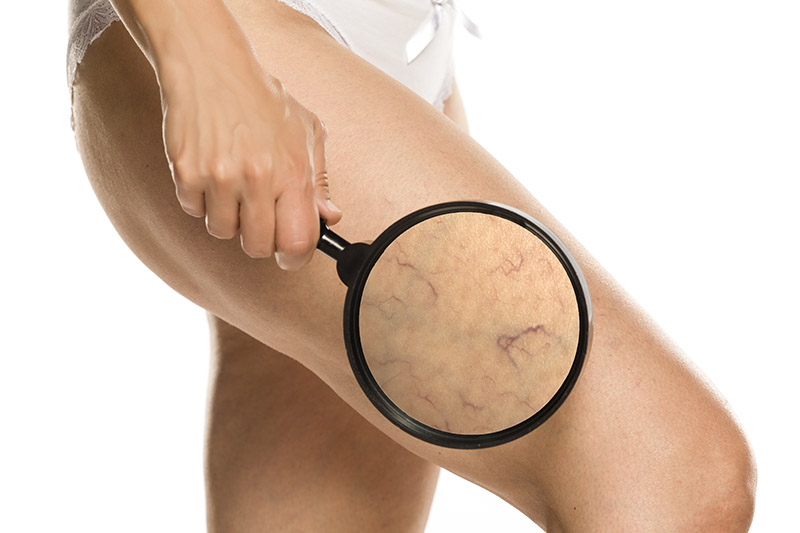Spider Veins
Spider veins appear as tiny threadlike blue or red veins that are usually located on the legs but can be seen on the face, chest or abdomen. Spider Veins can appear isolated but when appear in clusters with various patterns are usually associated with underlying larger bluish reticular veins. Patients with both spider veins and reticular veins may be asymptomatic but can also experience symptoms of ache and tenderness. Although they carry blood the flow is abnormal and is not necessary to the circulation system. Spider veins are generally considered not dangerous but may be an indicator of underlying vein problems that if left untreated could progress to complications.
Spider Veins do appear in men usually around the foot and ankle and in such cases is suggestive of hidden vein issues. Spider veins are far more common in females and are seen all over the legs and a as the production of female hormone is a known stimulant for spider veins production in some females.
How do we treat Spider veins?
All patients with any vein presentation requires an initial consultation to clearly define the concern and when appropriate is followed by a Venous duplex scan to identify any underlying hidden veins that need to be addressed with EVLA and or UGFS before we can effectively treat the spider veins. The recognized Gold standard for spider vein treatment is sclerotherapy also known as Direct Vision Sclerotherapy. This involves the introduction of sclerosant into the lumen of the spider vein using a microneedle which causes a change in the vein wall that commences the process of absorption and the vein gradually fades and disappears. Several treatments are usual to achieve the best results. During the procedure, most patients report only minor stinging sensations which lasts for an instant.
Following the procedure patients are required to wear a compression stocking during the day for about 5 days. The stocking helps the healing process and reduces the risk of complications of excessive inflammation, pigmentation, swelling and thrombosis. It is advised to walk at least 30 minutes a day.

